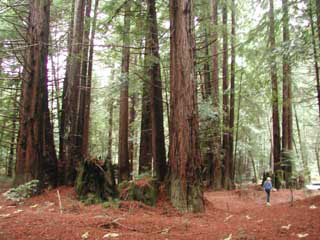
The timeline on the redwood cross section said it had been born when the Roman Empire was at the height of its power, around 100 A.D. I was standing in front of a 30-foot-wide tree trunk in the Northern Californian logging town of Fort Bragg.
Tiny little monkey brains, like mine, find it difficult to comprehend what it might mean to live that long. This tree was older than the Catholic Church, one of humanity's oldest uninterrupted power structures. It was 9 times older than the United States. During its lifetime, countless empires rose and fell. A dark age came and went. The Magna Carta was written, providing the foundation for western law. The Scientific Method was born, revolutionizing human existence. 50 generations of humans lived and died, all within the lifetime of that one tree.
Then, about a hundred years before its second millennium birthday, loggers cut it down. When it fell, it probably weighed in excess of 2,000 tons, or more than 13 blue whales, the largest animals in the world. Based on its weight, it would have produced in excess of 1.67 million board feet of prime lumber. That's a huge amount of house frames, roofs, and decks.
To better understand redwoods and the local logging industry that cut giants like this down, I took the Skunk Train from Fort Bragg up through the Noyo River valley. The Skunk Train used to carry logged redwoods, but when that industry collapsed, it started carrying tourists. As we chugged up through the valley, the train engineer shared an inspiring story.
